Harmonic Analysis is the process of determining the root movement of chords within a chord progression, the chord types that are used as well as identifying tonal centers. This root movement can be determined and categorized using one of six harmonic principles and the harmonized chord charts referenced in the lessons.
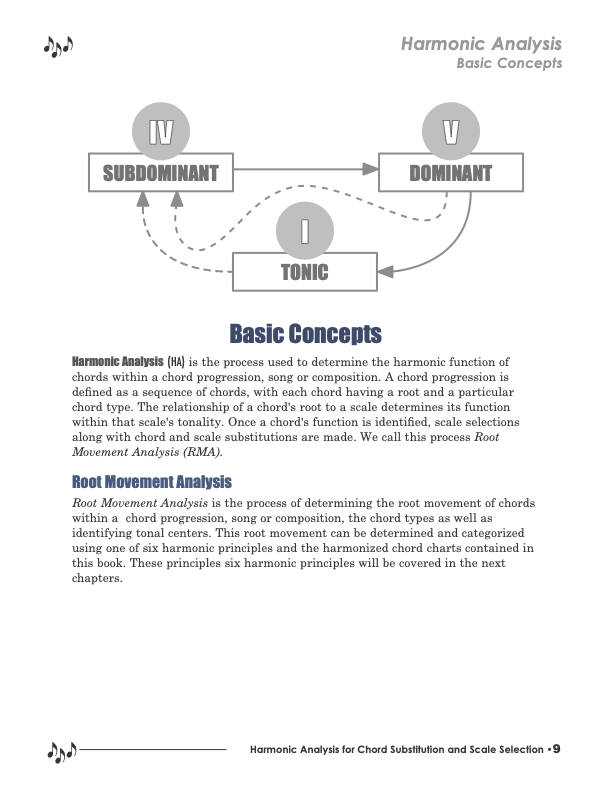
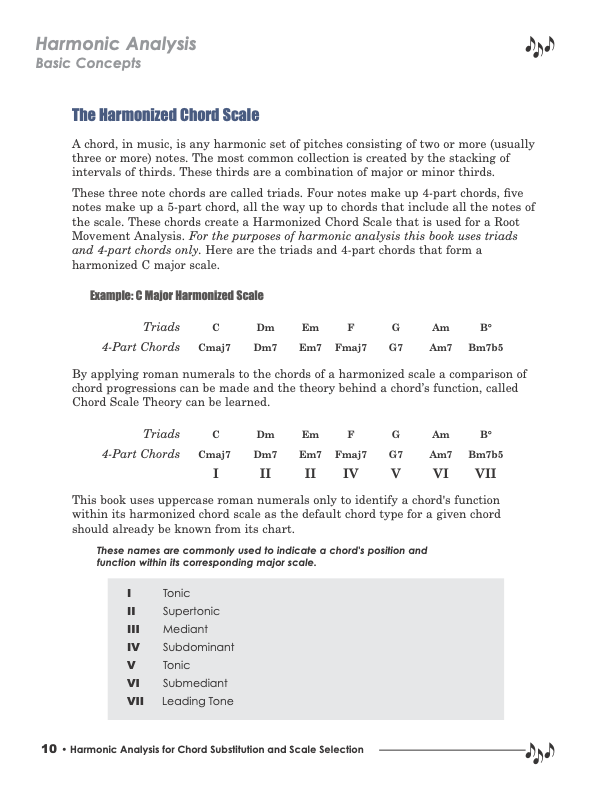
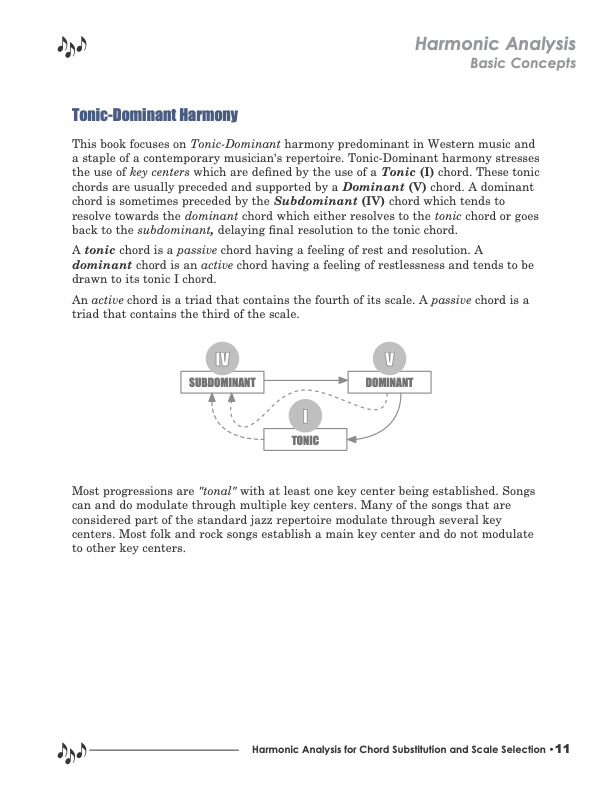
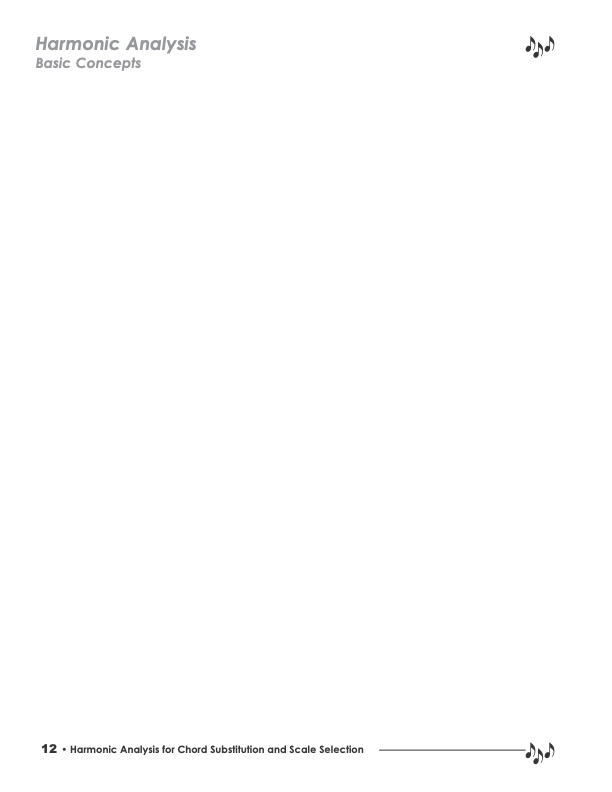




Harmonic Analysis (HA) is the process used to determine the harmonic function of chords within a chord progression, song or composition. A chord progression is defined as a sequence of chords, with each chord having a root and a particular chord type. The relationship of a chord's root to a scale determines its function within that scale's tonality. Once a chord's function is identified, scale selections along with chord and scale substitutions are made. We call this process Root Movement Analysis (RMA).
Available for Premium Site Access Plans Only
Root Movement Analysis
Root Movement Analysis is the process of determining the root movement of chords within a chord progression, song or composition, the chord types as well as identifying tonal centers. This root movement can be determined and categorized using one of six harmonic principles and the harmonized chord charts contained in this book. These principles six harmonic principles will be covered in the next lessons.
The Harmonized Chord Scale
A chord, in music, is any harmonic set of pitches consisting of two or more (usually three or more) notes. The most common collection is created by the stacking of intervals of thirds. These thirds are a combination of major or minor thirds.
These three note chords are called triads. Four notes make up 4-part chords, five notes make up a 5-part chord, all the way up to chords that include all the notes of the scale. These chords create a Harmonized Chord Scale that is used for a Root Movement Analysis. For the purposes of harmonic analysis this book uses triads and 4-part chords only. Here are the triads and 4-part chords that form a harmonized C Major Scale .
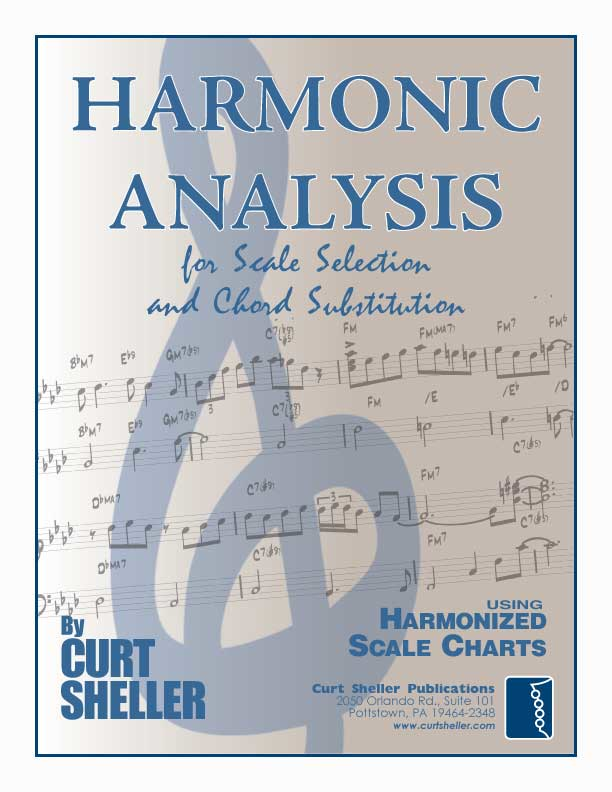
This series, is the book Harmonic Analysis for Chord Substitution and Scale Selection by Curt sheller broken out into individual lessons with additional examples and content. Always, the latest version of the book.
Harmonic Analysis (HA) is the process used to determine the harmonic function of chords within a chord progression, song or composition. A chord progression is defined as a sequence of chords, with each chord having a root and a particular chord type. The relationship of a chord's root to a scale determines its function within that scale's tonality. Once a chord's function is identified, scale selections along with chord and scale substitutions are made. We call this process Root Movement Analysis (RMA).
Available for Premium Site Access Plans Only
Root Movement Analysis
Root Movement Analysis is the process of determining the root movement of chords within a chord progression, song or composition, the chord types as well as identifying tonal centers. This root movement can be determined and categorized using one of six harmonic principles and the harmonized chord charts contained in this book. These principles six harmonic principles will be covered in the next lessons.
The Harmonized Chord Scale
A chord, in music, is any harmonic set of pitches consisting of two or more (usually three or more) notes. The most common collection is created by the stacking of intervals of thirds. These thirds are a combination of major or minor thirds.
These three note chords are called triads. Four notes make up 4-part chords, five notes make up a 5-part chord, all the way up to chords that include all the notes of the scale. These chords create a Harmonized Chord Scale that is used for a Root Movement Analysis. For the purposes of harmonic analysis this book uses triads and 4-part chords only. Here are the triads and 4-part chords that form a harmonized C Major Scale .

This series, is the book Harmonic Analysis for Chord Substitution and Scale Selection by Curt sheller broken out into individual lessons with additional examples and content. Always, the latest version of the book.
Harmonic Analysis - Basic Concepts
Example: C Major Harmonized Scale
Triads:
4-Part Chords:
RMA:
* Technically a half-diminished seventh chord in a major scale.
By applying Roman numerals to the chords of a harmonized scale, a comparison of chord progressions can be made and the theory behind a chord's function, called Chord Scale Theory, can be learned.
This book uses Uppercase Roman Numerals Only to identify a chord's function within its harmonized chord scale as the default chord type for a given chord should already be known from its chart.
These names are commonly used to indicate a chord's position and function within its corresponding major scale.
Tonic-Dominant Harmony
This series, the book Harmonic Analysis for Chord Substitution and Scale Selection by Curt sheller focuses on Tonic-Dominant harmony predominant in Western music and a staple of a contemporary musician's repertoire. Tonic-Dominant harmony stresses the use of key centers which are defined by the use of a Tonic (
A tonic chord is a passive chord having a feeling of rest and resolution. A dominant chord is an active chord having a feeling of restlessness and tends to be drawn to its tonic I chord.
An active chord is a triad that contains the fourth of its scale. A passive chord is a triad that contains the third of the scale.
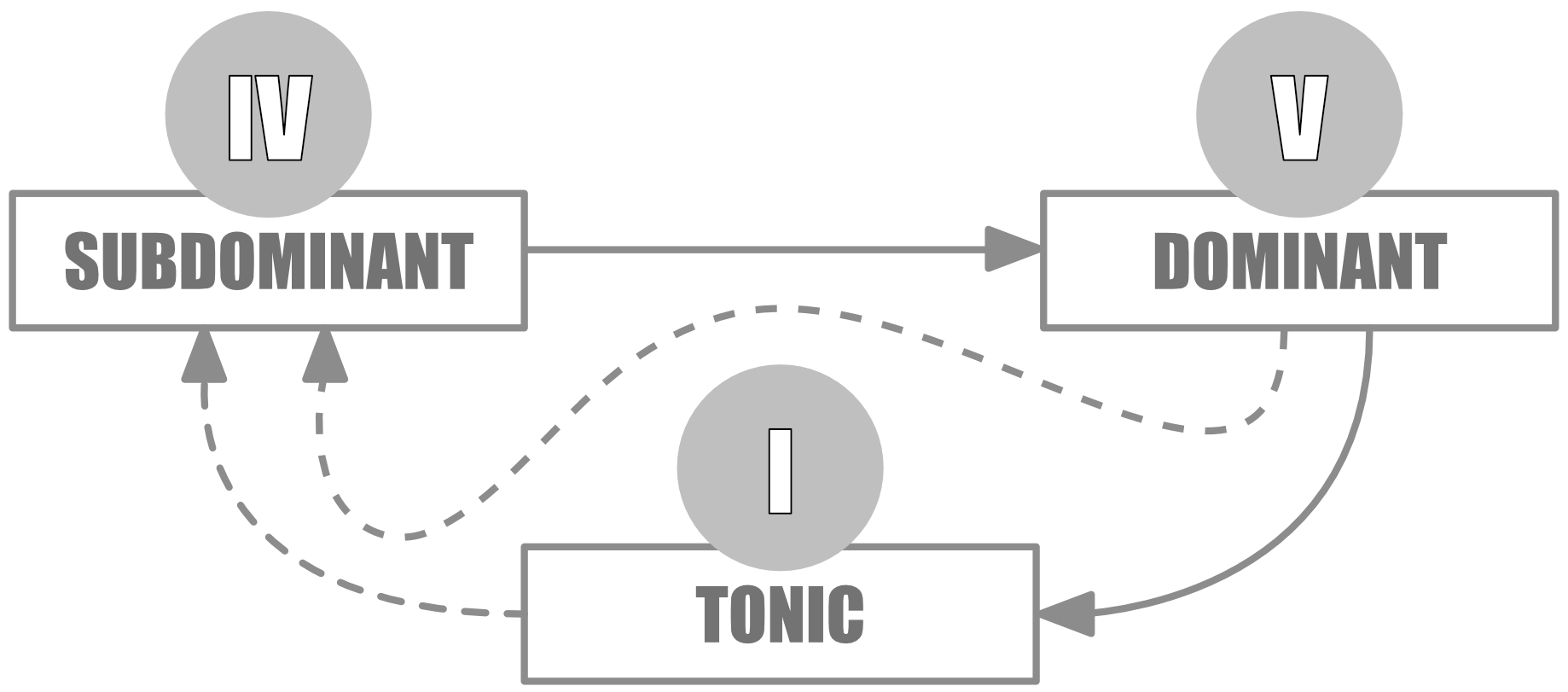
Most progressions are tonal
with at least one key center being established. Songs can and do modulate through multiple key centers. Many of the songs that are considered part of the standard jazz repertoire modulate through several key centers. Most folk and rock songs establish a main key center and do not modulate to other key centers.
Related Lessons, Videos, Lesson Series, Songs, Books & Reference Charts, Resources & Assets, Workshops are below.
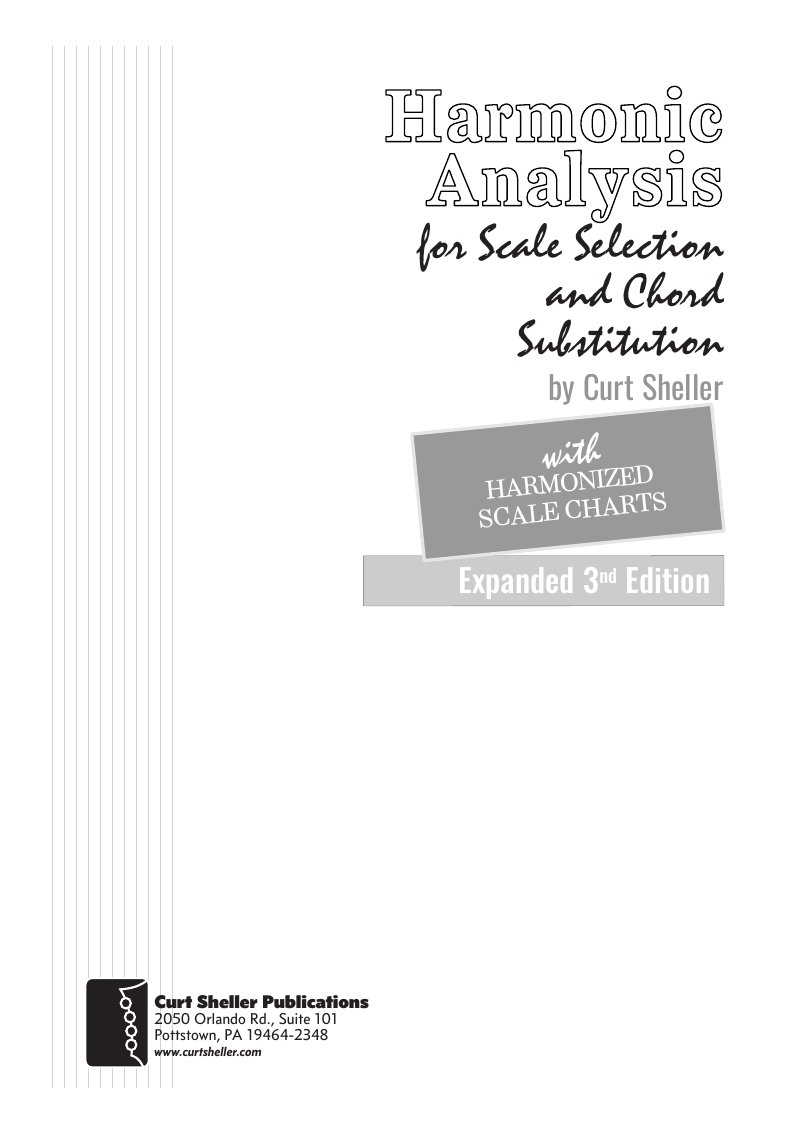
Harmonic Analysis ( HA ) is the process used to determine the harmonic function of chords within a chord progression. A chord progression is defined as a sequence of chords, each chord has a root and has a particular chord type. The relationship of a chord's root to a scale determines its function within that scale's tonality. Once a chord's function is identified, scale selections along with chord and scale substitutions can be made. This process is called Root Movement Analysis ( RMA ). This series of lessons are extracted from my book for use with individual private and on-line students. Each lesson directly corresponds the chapters in my book Harmonic Analysis for Scale Selection and Chord Substitution by Curt Sheller (me).

Harmonic Analysis is the understanding of the functional sequence of chords. It is the process used to analyze the harmonic structure of a progression, song or composition. This analysis is then used to make scale selections for improvisation and chord substitution.


return in your investment)—it is this— learning the
f*ckingnotes of your OWN instrument. Sorry for the tough talks—but it is sooooo true!

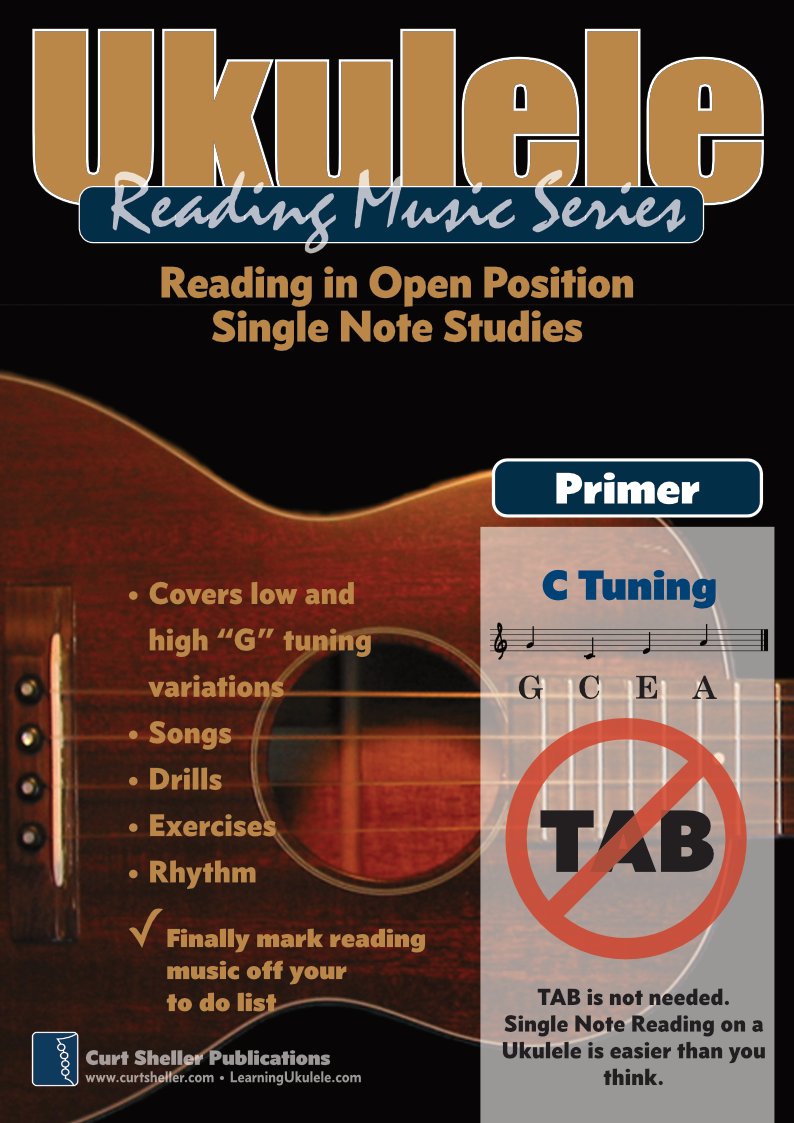
Learn to read single note melodies in the first/open position is a lot easier than you might think. Book: Ukulele – Reading Music Series – Primer

An organized collection of daily practice and reference material for the contemporary ukulele player for developing the vocabulary and knowledge necessary for single note playing. Book: Daily Practice Material for the Contemporary Ukulele
Checkout the Books & Reference Charts for additional Handy, Dandy Reference Charts.
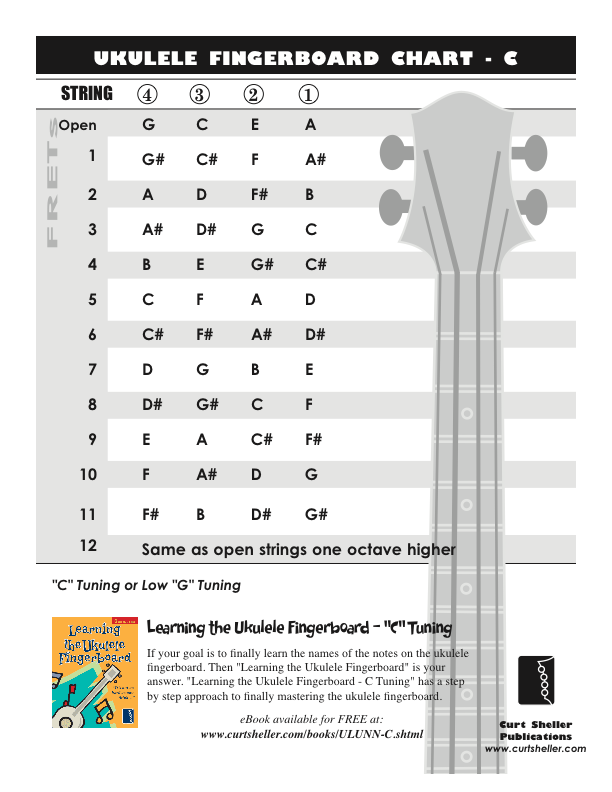
Ukulele Fingerboard Chart for C Tuning, Low or High G – G C E A
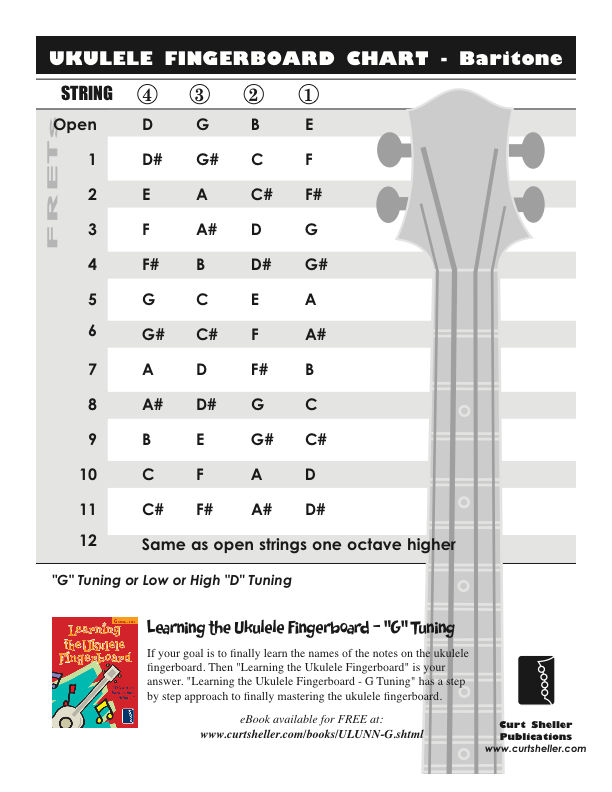
Ukulele Fingerboard Chart for G Tuning, Low or High A – D G B E
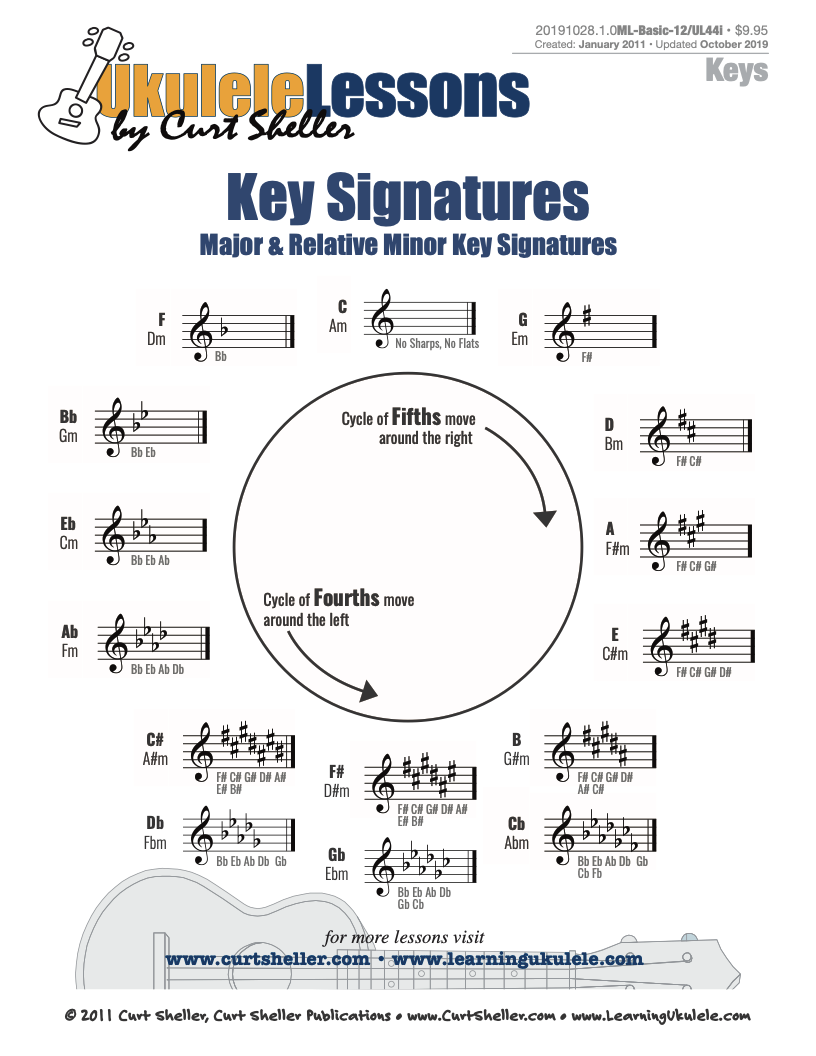
A handy reference chart of all 15 major and relative minor key signatures. US Letter 8.5 x 11 sized (ANSI-A) , A4



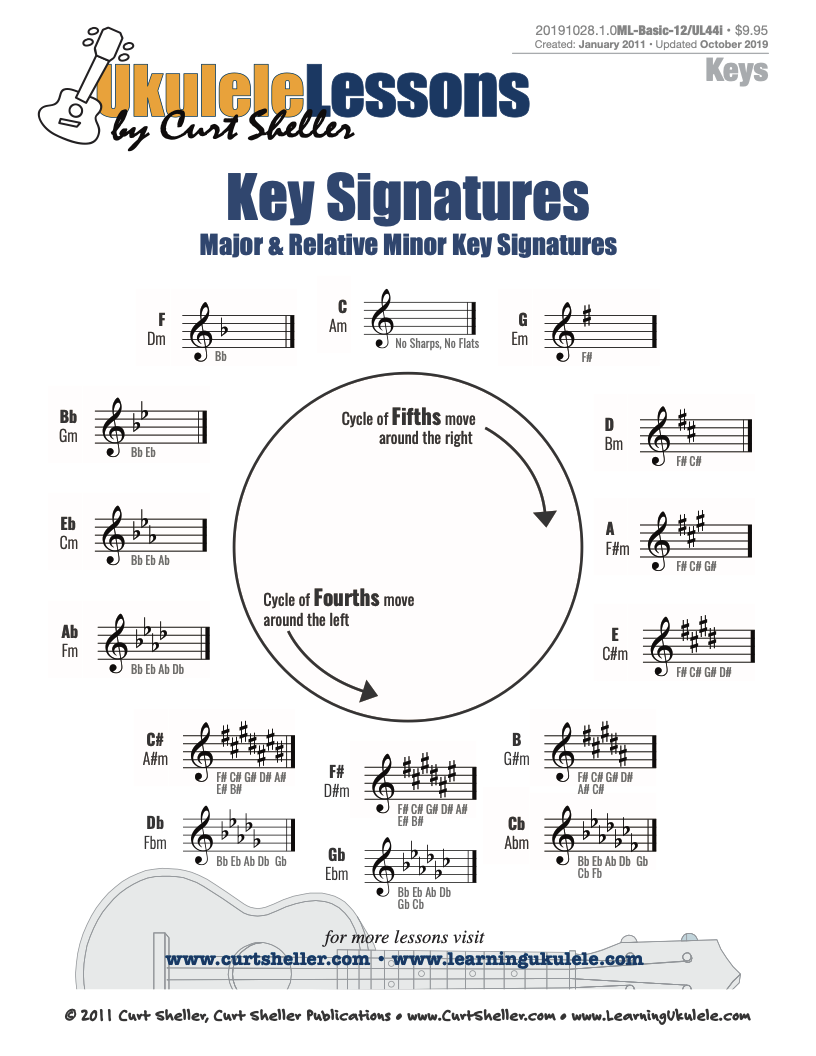
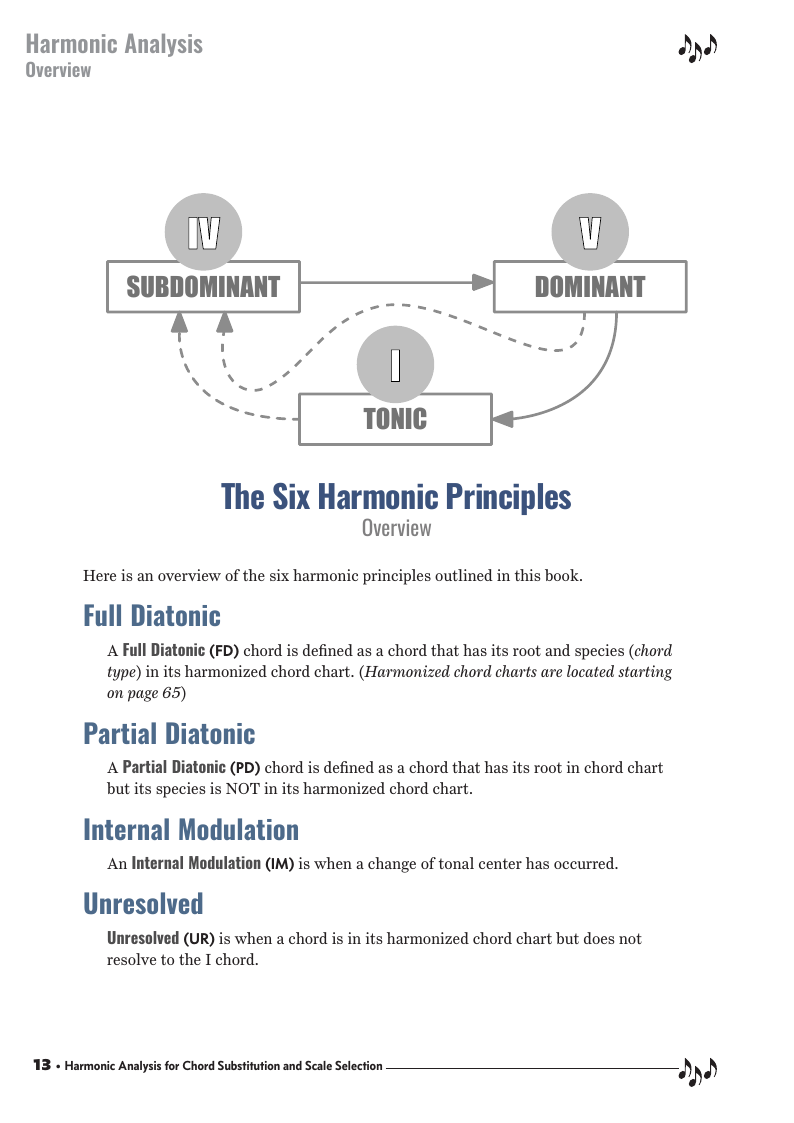
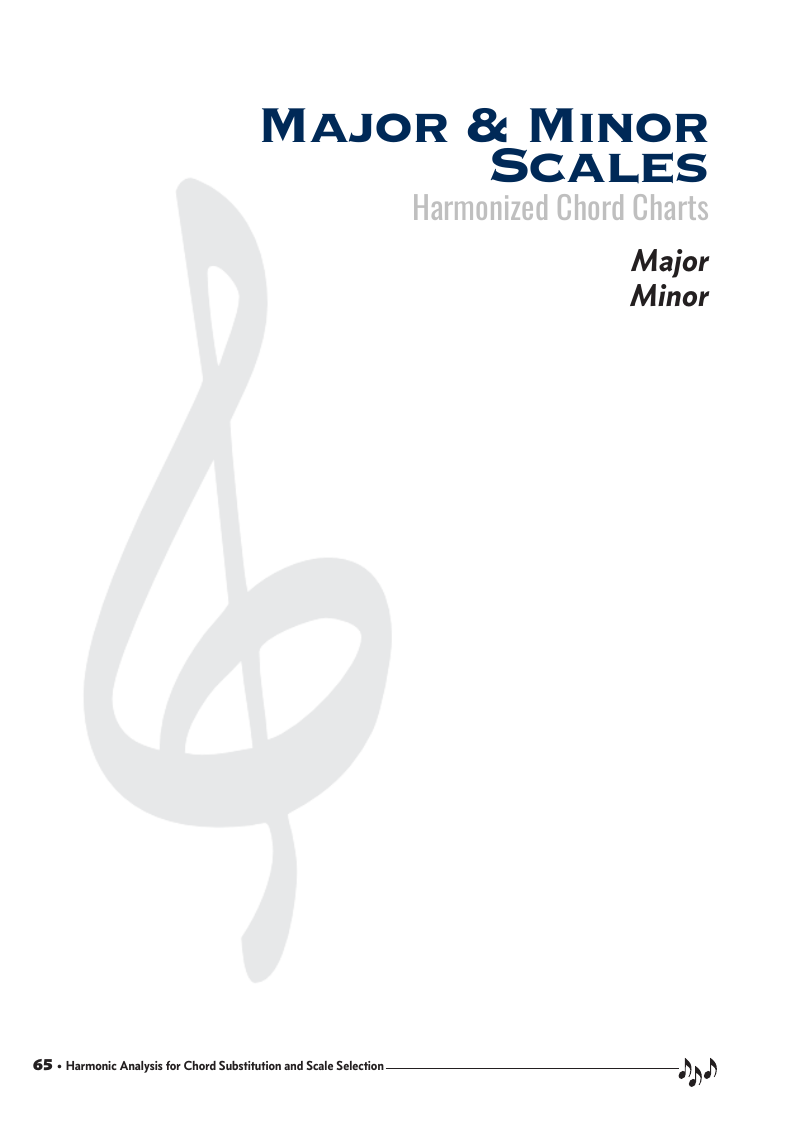
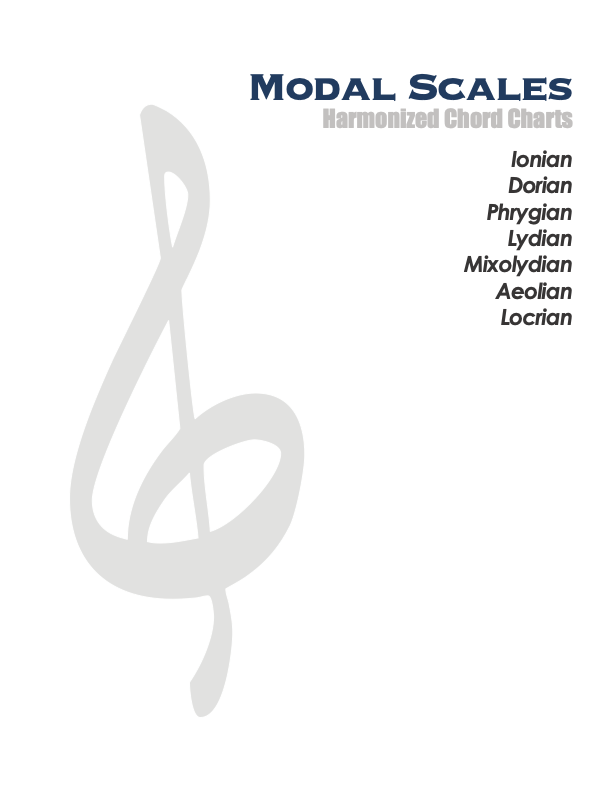
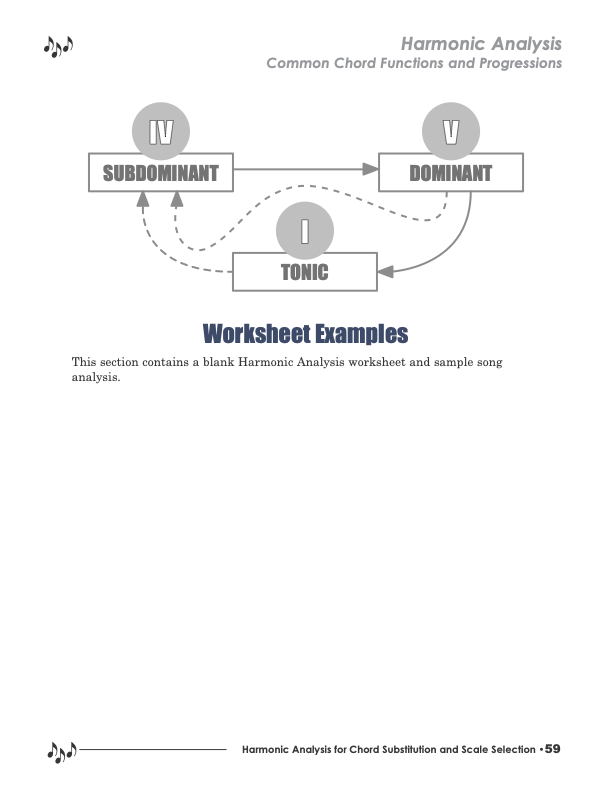

.jpg)